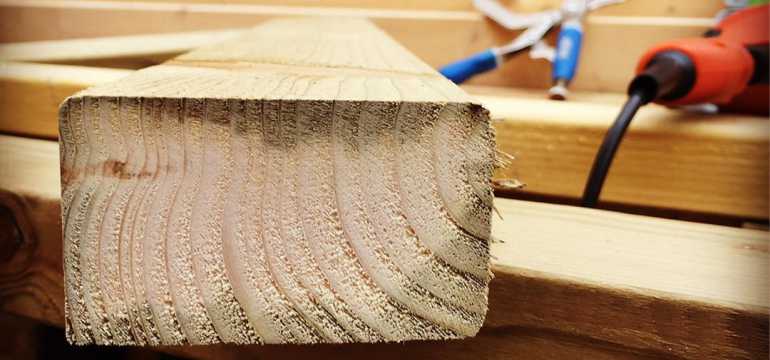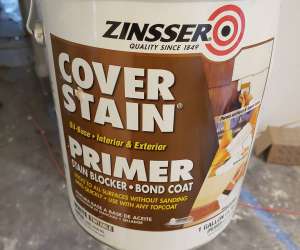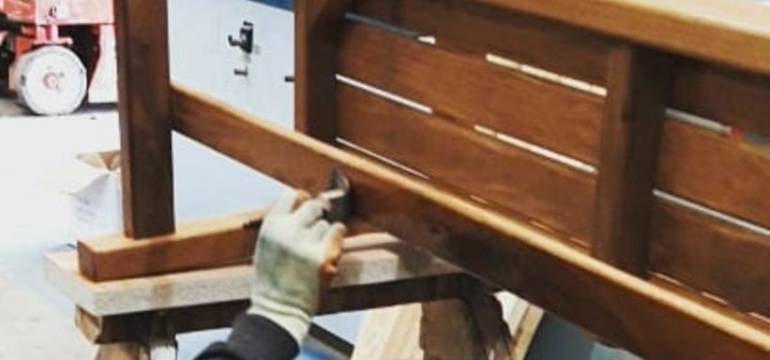The color and natural appearance of pressure-treated lumber is not always the most appealing option. A lot of homeowners wish they could change the look of their porch or fencing by painting away these unwanted hues. How hard could it be to roll out a fresh coat of paint and improve the exterior appearance of your home? It all comes down to knowing the best primer for pressure-treated wood.
Before you make any decisions, here are all the facts you need to know about priming and painting your pressure-treated wood.
When Can You Paint?

One of the first things you need to know is that not all pressure treated lumber is ready to accept a coat of primer and paint. If you recently purchased your wood or just had it installed, then you may need to wait a few weeks or months until the wood is ready. It should be completely dry before you even consider improving its appearance.
How do you know when the wood is ready to be painted? Wait for a rainy day and see what happens to the wood. Fresh lumber often does not absorb the water, and the droplets will sit on the surface of the wood. Pressure-treated wood that is completely dry can absorb the water droplets.
Once the wood is dry enough to accept a thick coat of primer, you can begin to prepare the wood. Clean it with soap and water to remove any trace of debris that could become trapped under your new paint. If the wood has been around for a while, it may take more than simple soap and water. A commercial cleaner, along with a high-quality pressure washer can help you to get the job done right.
Give the job time to dry after cleaning. Try the water droplet test again once you think that the lumber is dry enough to move forward. If the water is absorbed, then you might be good to go.
Skipping the Drying Part
Unfortunately, if you skip out on allowing your pressure-treated lumber to dry, then your paint will likely peel eventually. If you are really in a hurry to get your project done, look for something marked as kiln-dried after treatment pressure treated wood at your local lumberyard. This is sometimes abbreviated as KDAT.
While you may still have to wait for a little while, the timeline can be sped up with this type of lumber.
Choosing Primer for Pressure Treated Lumber
What is the best primer for pressure-treated wood? Many experts claim that latex-based paints and primers are the best options. While you might be able to use oil-based primers, many people find that they sometimes resist the surface. No matter what you choose, look for a bucket designated for outdoor use or exterior use. You may even come across labels that recommend it for use specifically with pressure-treated wood.
 However, other people argue that the best exterior primer for pressure treated wood is actually an oil-based option made by Rust-oleum. They recommend their Zinsser Cover Stain Primer because it can block stains, hide dark colors, and prevent tannin bleed all while penetrating and sealing exterior wood. In particular, it is known for blocking cedarwood and redwood bleed.
However, other people argue that the best exterior primer for pressure treated wood is actually an oil-based option made by Rust-oleum. They recommend their Zinsser Cover Stain Primer because it can block stains, hide dark colors, and prevent tannin bleed all while penetrating and sealing exterior wood. In particular, it is known for blocking cedarwood and redwood bleed.
When painting primer, make sure to apply thin coats at a time. How you apply, it matters much more than what you apply. You will likely only need one coat of primer, but a thin coat gets the job done more evenly than a thick one. It also dries faster.
With the Zinsser primer, you should be able to move on to the final coats of paint within an hour of finishing the final brush stroke or spray. Keep in mind that pressure-treated lumber may take a little extra time to dry, so don’t rush into painting.
Finishing Touches

Once the primer is finished drying, it is time to paint it. A latex-based paint works best on pressure-treated lumber. Make sure to apply to even coats to get great coverage on the wood. If the paint is applied well, then it should last you for several years before you need to touch it up. On the other hand, if you paint before the wood is ready and dry, then you might face peeling paint much sooner.
Priming and painting exterior lumber don’t have to be difficult. You just need to know how to select a good primer for pressure-treated wood. Fortunately, much of the information you need is spelled out on the labels of popular brands. Keep an eye out for primers like the Zinsser name brand that are specially designed for this application. Look for some of these criteria and get to work painting your deck, fence, and any other projects you have around the house!
- How to Cut Lexan - September 25, 2020
- Mineral Spirits vs. Mineral Oil - September 25, 2020
- Shellac vs. Polyurethane - September 24, 2020
